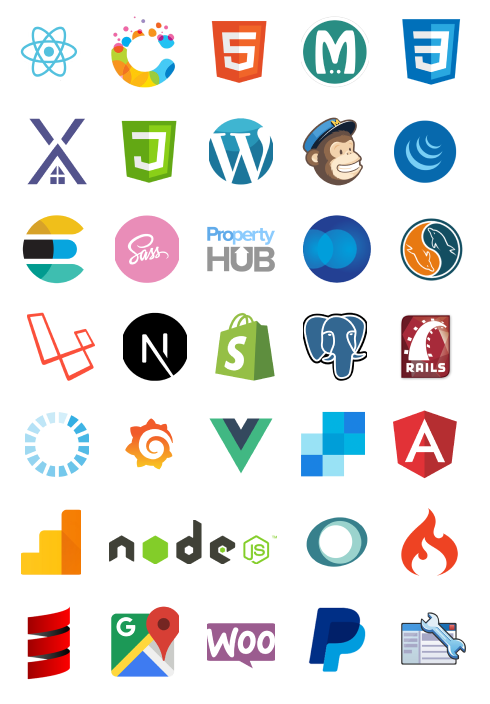Legacy system modernisation represents a critical initiative facing SMB organisations today. With aging infrastructure constraining business growth and increasing security vulnerabilities, organisations need practical strategies for executing modernisation projects successfully while managing costs, risks, and vendor relationships.
This guide is part of our comprehensive Complete Guide to Legacy System Modernization and Migration Patterns, providing targeted expertise on the execution and vendor management aspects of modernisation initiatives. Over 60% of data breaches involve legacy systems with inadequate controls. This comprehensive guide addresses the practical challenges of finding, evaluating, and managing vendors for legacy modernisation projects, providing actionable strategies for ensuring project success and achieving measurable ROI from your modernisation investment.
How do you evaluate vendors for legacy system modernisation projects?
Vendor evaluation requires a structured approach combining technical capabilities assessment, financial stability verification, and cultural fit analysis. Use a scoring matrix evaluating modernisation experience, relevant technology expertise, project management methodology, communication protocols, and pricing transparency.
Multi-Stage Evaluation Framework
Use a Vendor Evaluation Matrix to evaluate:
- Technical capability assessment: Evaluate vendors’ specific experience with your technology stack and modernisation approaches
- Financial stability verification: Assess vendor financial health and stability for long-term partnerships
- Cultural fit analysis: Determine alignment with your organisation’s communication style and decision-making processes
- Reference verification: Verify claimed successes through detailed case studies and client references
Prioritise vendors with proven SMB experience and request detailed case studies demonstrating similar project success.
Proof of Concept Implementation
Implement proof of concept evaluations to test vendor capabilities in real-world scenarios. This approach validates technical claims while providing insight into vendor communication, problem-solving abilities, and cultural alignment with your organisation’s working style.
What are the essential components of an RFP for legacy modernisation?
An effective modernisation RFP must include current system documentation, business objectives, technical requirements, timeline expectations, budget parameters, evaluation criteria, and performance metrics. Define scope boundaries clearly, specify required deliverables, outline project governance structure, and establish communication protocols.
RFP Structure and Core Components
Essential RFP sections include:
- Current system documentation: Complete architecture diagrams, data models, integration points, and performance baselines
- Business objectives: Clear articulation of modernisation goals, success criteria, and expected outcomes
- Technical requirements: Specific technology preferences, security requirements, scalability needs, and compliance mandates
- Timeline expectations: Project phases, milestone dates, and delivery schedules
- Budget parameters: Cost constraints, payment structures, and financial expectations
- Evaluation criteria: Scoring methodology, decision-making process, and vendor comparison framework
Vendor Qualification and Assessment
Include mandatory vendor qualifications covering relevant experience, technical certifications, financial stability, and resource availability. Request detailed implementation methodologies with risk mitigation strategies.
Coordinate vendor demonstrations to explore key functionality, gap resolution plans, customisation capabilities, and post-implementation support.
Legal and Compliance Considerations
Address intellectual property ownership, data security responsibilities, compliance requirements, liability limitations, performance guarantees, dispute resolution, and termination procedures.
How do you estimate timelines and budgets for legacy modernisation initiatives?
Timeline estimation requires systematic assessment of system complexity, data migration requirements, integration points, testing phases, and vendor capabilities. As outlined in our legacy modernization fundamentals, factor in discovery phases, parallel system operations, user training, and contingency buffers.
Timeline Estimation Methodology
Key timeline factors include:
- System complexity assessment: Legacy architecture analysis, dependency mapping, and integration complexity evaluation
- Data migration requirements: Data volume, transformation needs, validation processes, and synchronisation requirements
- Integration points: External system connections, API dependencies, and third-party service integrations
- Testing phases: Unit testing, integration testing, user acceptance testing, and performance validation
- Vendor capabilities: Team size, experience level, methodology expertise, and resource availability
Budget Component Breakdown
Budget estimation should include vendor costs, internal resource allocation, infrastructure requirements, licensing fees, training expenses, and 20-30% contingency for scope changes and unforeseen complications.
Essential budget components:
- Vendor professional services: Development, consulting, project management, and specialised expertise costs
- Internal resource allocation: Staff time, opportunity costs, and additional hiring needs
- Infrastructure requirements: Hardware, cloud services, networking, and security infrastructure
- Software licensing: New platform licences, development tools, and third-party integrations
- Training and change management: User training, documentation, and adoption support programmes
Implement systems for ongoing cost tracking, comparing projected to actual expenditures monthly or quarterly. Each budget line must be linked to measurable business outcomes.
What project management methodologies work best for legacy modernisation?
Hybrid methodologies combining waterfall planning with agile execution provide optimal balance for legacy modernisation projects. Use waterfall for initial assessment, planning, and contract establishment, then implement agile methodologies for development phases enabling iterative feedback and adaptation.
Hybrid Methodology Implementation
This approach emphasises a systematic, phased approach to transforming legacy systems while minimising operational disruption. Break the modernisation process into small, manageable increments, with each increment delivering a specific set of features or functionalities.
Key agile practices for legacy modernisation:
- Incremental delivery: Implement changes in small, testable increments that deliver immediate business value
- Cross-functional collaboration: Foster collaboration between development, operations, and business teams
- Continuous feedback: Establish regular stakeholder reviews and user feedback sessions
- Adaptive planning: Adjust project scope and priorities based on discoveries and changing requirements
DevOps Integration and Governance
Incorporate DevOps practices for continuous integration and deployment while maintaining rigorous change control processes. Establish a project governance structure that balances agility with control, ensuring accountability while enabling rapid response to changing requirements.
How do you manage risk during legacy system modernisation projects?
Risk management requires comprehensive identification, assessment, and mitigation planning addressing technical, operational, financial, and vendor-related threats. Legacy systems lack vendor support, have outdated architecture incompatible with modern security standards, and known vulnerabilities, creating multiple risk vectors requiring systematic management.
Project Risk Assessment Framework
Key risk categories include:
- Technical risks: System compatibility, data integrity, performance degradation, and integration failures
- Operational risks: Business continuity disruption, user productivity impact, and service availability
- Financial risks: Budget overruns, scope creep, vendor cost escalation, and opportunity costs
- Vendor risks: Performance failures, resource availability, communication breakdown, and contract disputes
Risk Mitigation Strategies
Implement parallel system operations during transition phases, develop detailed rollback procedures, establish performance benchmarks, and create contingency funding reserves.
Essential mitigation approaches:
- Parallel operations: Run old and new systems simultaneously during transition phases to ensure business continuity
- Rollback procedures: Develop comprehensive plans in case issues arise during transition
- Performance benchmarks: Establish baseline measurements and acceptance criteria
- Contingency reserves: Maintain financial and resource buffers for unexpected issues
Maintain regular risk reviews with stakeholders and establish clear escalation procedures for critical issues requiring immediate attention. For comprehensive guidance on all aspects of modernisation planning and execution, see our Complete Guide to Legacy System Modernization and Migration Patterns. Develop business continuity planning addressing critical business functions, alternative workflows, and emergency procedures.
How do you establish vendor performance metrics and KPIs?
Effective performance metrics combine quantitative deliverable tracking with qualitative relationship assessment. Establish baseline measurements for timeline adherence, quality standards, communication responsiveness, and budget compliance.
Performance Metric Framework Development
Essential performance metrics include:
- Timeline adherence: Milestone completion rates, schedule variance, and delivery predictability
- Quality standards: Defect rates, testing pass rates, and rework requirements
- Communication responsiveness: Response times, meeting attendance, and documentation quality
- Budget compliance: Cost variance, scope change management, and resource utilisation efficiency
Payment Milestone Structure
Implement milestone-based payment structures linking vendor compensation to performance achievements.
Track and analyse performance data regularly to ensure vendors meet agreed standards and deliverables, helping you spot issues early.
What are the key phases of a legacy modernisation project execution plan?
Legacy modernisation execution follows six key phases: discovery and assessment, planning and design, vendor selection and contracting, implementation and testing, deployment and transition, and post-implementation optimisation. Each phase includes specific deliverables, quality gates, stakeholder approvals, and risk checkpoints. This structured approach aligns with the comprehensive framework outlined in our legacy system modernization and migration patterns guide.
Phase-Specific Execution Framework
Key execution phases:
- Discovery and Assessment: Legacy system analysis, business requirements gathering, and technical architecture documentation
- Planning and Design: Solution architecture development, implementation roadmap creation, and resource planning
- Vendor Selection and Contracting: RFP process execution, vendor evaluation, and contract negotiation
- Implementation and Testing: Development execution, quality assurance, and integration testing
- Deployment and Transition: Production deployment, user training, and system cutover
- Post-Implementation Optimisation: Performance monitoring, issue resolution, and continuous improvement
Quality Gates and Milestone Management
Each phase requires specific quality gates ensuring deliverable completeness and stakeholder approval before proceeding. Quality gates should include technical reviews, business validation, security assessments, and stakeholder sign-offs.
Break the modernisation process into small, manageable increments, with each increment delivering specific sets of features or functionalities.
How do you build a project team for legacy modernisation initiatives?
Successful modernisation teams require cross-functional collaboration combining business stakeholders, technical leadership, vendor liaisons, and change management specialists. Establish clear roles and responsibilities, define decision-making authority, create communication protocols, and ensure adequate executive sponsorship.
Team Structure and Role Definitions
Essential team roles include:
- Executive sponsorship: C-level leadership providing authority, resources, and strategic direction
- Technical leadership: Architecture, development, and infrastructure expertise for solution guidance
- Business stakeholders: Domain experts understanding current processes and future requirements
- Vendor liaisons: Relationship management and communication coordination with external partners
- Change management specialists: User adoption, training, and organisational change facilitation
Communication and Decision-Making Protocols
Establish regular communication cadences including:
- Executive briefings: Weekly or bi-weekly updates on project status, risks, and decisions
- Technical reviews: Architecture decisions, implementation progress, and technical issue resolution
- Business validation: Requirements confirmation, user feedback, and business impact assessment
- Vendor coordination: Performance monitoring, issue escalation, and relationship management
Include dedicated change management resources focusing on user adoption and training programme development to ensure modernisation investments deliver intended business value.
FAQ Section
How long does a typical legacy modernisation project take for SMB companies?
SMB legacy modernisation projects typically range from 6-18 months depending on system complexity, data volume, integration requirements, and chosen implementation approach.
What’s the average cost of modernising legacy systems for small businesses?
Legacy modernisation costs typically range from $50,000-$500,000 for SMB organisations, including vendor fees, infrastructure, and internal resources.
How do I know if a legacy modernisation vendor is reliable?
Evaluate vendor reliability through reference checks, case study verification, financial stability assessment, and technical certifications.
What are the biggest risks when modernising old business systems?
Primary risks include data loss, business disruption, cost overruns, timeline delays, vendor performance issues, and inadequate user adoption of new systems.
What questions should I ask potential legacy modernisation vendors?
Key questions include project methodology, similar client experiences, timeline estimates, cost structures, risk mitigation strategies, and post-implementation support approaches.
Should I choose a large consulting firm or specialised vendor for modernisation?
Specialised vendors often provide better value for SMBs through focused expertise and competitive pricing, while large firms offer broader resources but higher costs.
How do I manage my team during a legacy system upgrade project?
Maintain transparent communication, provide adequate training, establish clear expectations, and ensure sufficient support during transition periods.
What happens if the modernisation project fails or needs to be stopped?
Implement comprehensive rollback procedures, maintain parallel systems during transition, establish clear exit criteria, and ensure contract terms include failure scenarios and data recovery protocols.
How do I ensure business continuity during legacy system modernisation?
Maintain parallel operations, implement phased rollouts, establish backup procedures, train users incrementally, and develop contingency plans for critical business functions.
What legal considerations should I include in modernisation vendor contracts?
Address intellectual property ownership, data security responsibilities, compliance requirements, liability limitations, performance guarantees, dispute resolution, and termination procedures.
How often should I review vendor performance during the project?
Conduct formal performance reviews bi-weekly during active development phases, with milestone-based assessments at each major deliverable and comprehensive reviews quarterly.
What’s the difference between phased and big bang modernisation approaches?
Phased approaches implement changes incrementally reducing risk and business disruption, while big bang approaches complete entire transformations quickly but with higher risk exposure.












